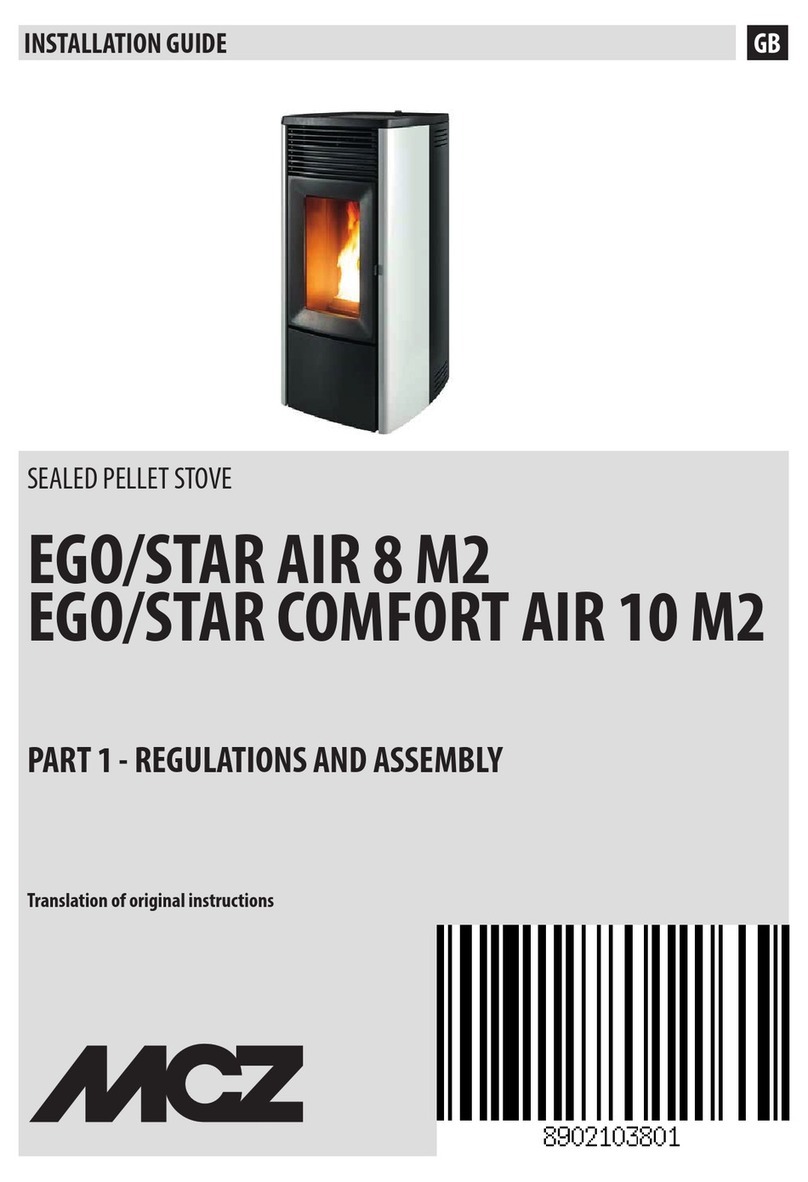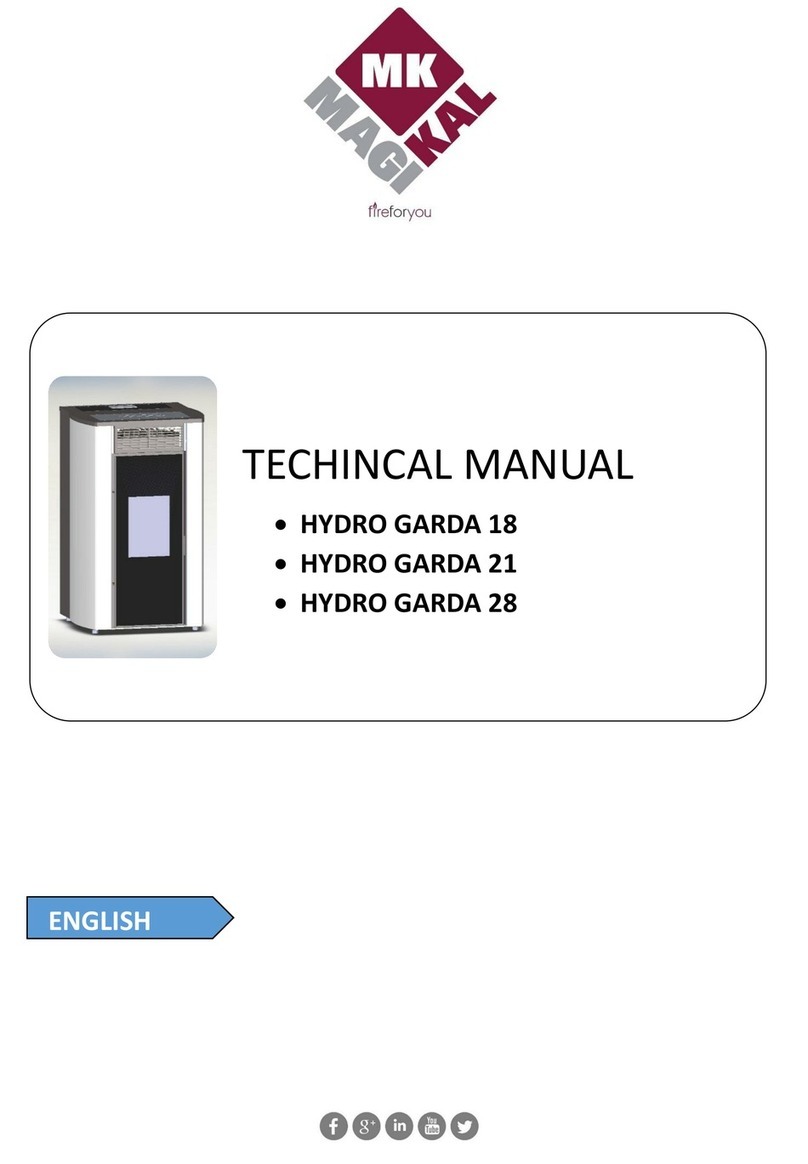Heco 420 Series User manual


INTRODUCTION
Congratulations on the purchase of your new Heco Cookstove, we hope that you enjoy using it!
Our Story
The Heco Cookstove originally started as an idea. Amos Stoltzfus, owner of Breeo, LLC, had a vision for a cookstove
that would be easy to use, attractive, and last a lifetime. The idea for this cookstove gradually turned into a reality as
the project transitioned from ideas, to drawings, to the actual fabrication process. The Heco Cookstove challenges an
industry that has seen few improvements or modifications in the last 20 years, with many cookstoves remaining
unchanged despite advances in clean burning technology. The clean lines and more simplistic, modern design of the
Heco Cookstove is a part of the plan to truly bring innovation to the cookstove market. This stove burns wood or coal,
allowing for unparalleled flexibility of fuel choices. The oven can be easily controlled for consistent baking and
cooking temperatures. All of the exterior parts, with the exception of the cooktop in some cases, are porcelain coated
for a beautiful, smooth finish. The Heco Cookstove is designed to be used for generations. Worn porcelain parts can
easily be replaced and switched out for different options. For example, a customer can choose glass doors to add
ambiance to the room the stove is in, or can easily switch to a solid door if they’d like to. The stove’s designer, Amos
Stoltzfus, has 20+ years of metal fabrication experience and 15+ years of stove design and production experience. The
Heco Cookstoves are manufactured at Breeo’s headquarters in Lancaster County, PA.
INDEX
INTRODUCTION & INDEX
Page 2
SAFETY INSTRUCTIONS
Page 3
OPERATIONAL & WORK PRACTICE STANDARDS
Page 4,5
COOKSTOVE LOCATION
Page 6,7
CHIMNEY REQUIREMENTS
Page 8
OPERATION CONTROLS
Page 9
BAKING & COOKING CONTROLS
Page 10
DOMESTIC WATER OPTIONS
Page 11
EXHAUST CLEANOUT
Page 12
420 PARTS LIST
Page 13
420 FIREBRICK LIST
Page 14
520 PARTS LIST
Page 15
520 FIREBRICK LIST
Page 16
TROUBLESHOOTING
Page 17,18
WARRANTY
Page 19
CONTACT INFO
Page 20
Page 2

SAFETY INSTRUCTIONS
1. Read all instructions before installing or operating any Heco Cookstove.
2. You must install both smoke and carbon monoxide detectors before installing or operating your cookstove.
3. Check your local codes; this installation must meet their guidelines.
4. Do not open bottom ash door to increase draft; the ash door is designed for emptying ashes only.
5. Never leave Heco Cookstove doors open when the cookstove is unattended.
6. Do not hook cookstove up to an aluminum Type B gas vent. Use a code approved Class A chimney that has a
6”diameter (min) to 8” diameter (max), and is a minimum of 20’ high.
7. Before you ignite your cookstove, be sure to inspect the chimney for any cracking or leaking liners, as this will
affect the draft.
8. Clean the chimney before installing your cookstove. If creosote is attached to the liner, you will run the risk of
a chimney fire.
9. Never leave children unsupervised while in the same room as the cookstove. To avoid injury, provide a sturdy
barrier to keep children and pets a safe distance from the cookstove.
10. Keep cookstove area clear of all combustible materials, gasoline, and other flammable vapors and liquids.
11. Use the required floor protection shown on the safety listing located on the back of the cookstove.
12. Ensure the clearance to combustible walls and floors meet the requirements listed on page 7 of this manual.
13. Do not allow anyone who is unfamiliar with the cookstove to operate it.
14. Spend time becoming acquainted with the different settings on your cookstove and how each will affect its
burning patterns. It is impossible to state exactly how each setting will affect your cookstove.
15. Be extremely careful when removing the ash pan from the cookstove. It may be extremely hot!
16. When replacing the baffle in the fire box, shut down the stove so the fire stops burning. Cookstove with 3
Panel Tops -
once the cookstove has cooled, remove the left and center cooktop panels to provide access to
the baffle. Cookstove with Solid Steel Top -
once the cookstove has cooled, you can access the baffle through
the fire door. The baffle is located above the reburn tubes at the top of the fire box.
17. Make sure your stove pipe has at least 3 screws per joint.
18. Do not install this cookstove in a mobile home or trailer.
19. Do not use a manual, barometric or automatic damper when burning wood.
Page 3

OPERATION & WORK PRACTICE STANDARDS
1. When burning wood, burn only dry, seasoned cord-wood, with 20% moisture content or less. Bring wood to
room temperature before burning.
2. Keep wood covered in a wood shed or under a tarp.
3. Right after delivery: stack cord-wood under cover.
4. Split cord wood before drying.
5. Do not burn green wood; it needs to have no more than 20% moisture.
6. All firewood must be seasoned at least 1 year .
7. Check wood moisture at least once a week.
8. Keep a 2” to 3” ash layer on top of the grates when burning wood. Note: Do not cover louver vents.
9. The cookstove is designed to burn air-dried wood and coal at a predetermined firing rate. Over-firing occurs
when the ash door is left open during operation or a highly volatile fuel ( i.e. large amounts of small kindling) is
used. The surface of your cookstove should not exceed 800 degrees. If the surface does exceed 800 degrees,
the warranty on the stove will be void.
10. Open firebox door slowly to avoid a “flashback”.
11. When you load wood into the cookstove, fully open the draft until the new wood ignites and then set to
normal burn; this will pre-heat the wood and the secondary re-burn will work more efficiently.
12. With new steel there is a small amount of oil and/or dirt on the metal so you may smell an odor. This is normal
during the first operation. You may want to assemble the cookstove outside and build a small fire in it to
“BURN OFF” this dirt and oil before installing the unit in your home.
13. Be extremely careful when removing the ash pan from the cookstove. It can get very hot!
14. Check the fit on the firebox door; It must fit tightly. If it does not, check for deterioration or wear of the
ceramic rope seal. Replace defective seals.
15. Inspect and clean your chimney and stove pipe regularly.
16. In the event of a chimney fire, shut all cookstove draft controls, alert everyone in the house, and call your fire
department immediately. If the flue is still burning vigorously, throw baking soda into the firebox or discharge
a fire extinguisher into the firebox. After the chimney fire is over, have a certified chimney sweep completely
inspect your system for damage before further use.
17. Slow fires: it is not recommended to burn the Heco Cookstove more than necessary early in the fall and late in
the spring, as you cannot keep the fire box hot enough to burn gasses (without overheating your home). Slow
fires can cause excessive creosote buildup in the firebox, stove pipe and chimney.
18. Equip your home with fire extinguishers, carbon monoxide detectors and smoke detectors.
19. Do not burn garbage, gasoline, or any other flammable liquids in your cookstove.
20. This is a wood and coal burning cookstove and should not be altered in any way. Altering the stove from the
original design will void the warranty.
Page 4

OPERATION & WORK PRACTICE STANDARDS
Testing Cookstove Draft Before Lighting
To test your draft, place a piece of newspaper inside the cookstove fire box and light it. Pay close attention to the
direction of fire’s flame and smoke. If the smoke is drawn up into the stove exhaust, your draft is working properly. If
the smoke spills out the door, you do not have proper draft.
Starting a Coal Fire
Remove the steel Wood Plate that sits on the grates inside the cookstove’s fire box. This plate cannot be used when
burning coal in the cookstove. Set oven bypass control to cooking mode. Fully open the Bimetal Regulator and
Airwash Controls. Place crumpled paper and kindling on the bottom grate inside the fire box and ignite with a match
or lighter. Use a small pile of kindling to get the fire started, adding larger pieces of wood to build up the heat of the
fire. Once your fire is hot, add 2” of coal over the entire grate area. As the coal starts burning and glows red, add
another layer of coal. Keep adding coal until you have an 8” body of fire. You can now add 30 lbs. of coal and adjust
the draft on the Bimetal Regulator Control to meet your needs.
NOTE: You can also use charcoal briquettes as a fire starter.
Maintaining a Coal Fire
Shake ashes every 12 hours if possible. You must keep your ashes cleaned out from underneath the grates; This may require
emptying your ash pan daily. If there is no air space under the grates, they will warp and become inoperable.
Starting a Wood Fire
Install the steel Wood Plate that sits on the grates inside the cookstove’s fire box; this plate will hold up the ash bed
of the fire. When starting a wood fire, use the steps listed above for starting a coal fire, but do not add coal. Allow ash
to build up on top of the grates; this will not choke the fire until it covers the louver vents. Keep approximately 2” to
3” of ash on grates at all times. The airwash vents will work as the fire’s primary air. Adjust the Airwash Control as
needed to burn a fire that meets your needs.
Creosote Formation & Removal
When wood is burned slowly, it can produce tar or other organic vapors, which, when combined with expelled
moisture, will form creosote. The creosote vapors condense in the relatively cool chimney flue of a slow burning fire.
As a result, creosote residue accumulates on the flue lining. When ignited, this creosote makes an extremely hot fire.
The chimney connector and the chimney itself should be inspected at least twice a month, during the heating season,
to determine if creosote buildup has occurred. If creosote has accumulated, the creosote should be removed
immediately to reduce the risk of a chimney fire.
NOTE: the key for reducing creosote buildup is to burn a hot fire and use seasoned firewood. Firewood should be
seasoned for one year with a moisture rating of no more than 20%. The wood should be cut, split and stacked under
open shelter to dry. Stack the firewood indoors one day prior to burning it. Shutting primary air supply to the fire box
will cause the fire to smolder, which will result in creosote accumulation.
Page 5

COOKSTOVE LOCATION
1. The cookstove must be located on a non-combustible floor. If you have a combustible floor, you are required
to use a non-combustible floor board (Type 1 Board).
2. Review the plaque on the cookstove before installation. The most important consideration in installing your
cookstove is adequate clearance between the stove and any combustible surface. A cookstove that is placed
too close in proximity to a wall or furniture may cause a fire.
3. The hearth must extend out at least 15” from the front edge of the cookstove, 8” from the rear of the
cookstove, and 8” from the left side of the cookstove. It also must run underneath and extend 2” beyond
either side of the stove pipe, if the pipe is elbowed towards a wall.
4. The cookstove must have its own chimney flue. Do not connect this unit to a chimney flue serving other
appliances.
5. Connection of the cookstove to the chimney should be made as direct as possible (6 feet maximum horizontal)
and no more than two bends should be used, as needed. Any reductions in the flue pipe should be no less
than 6” in diameter. The pipe connecting the cookstove to the chimney should be at least 24 gauge. Thicker
gauges are available, and will resist corrosion longer and need fewer replacements. Slope the flue pipe
towards the cookstove 1/4” per foot of horizontal run, this will help any condensation that forms in the pipe
to be carried back down into the cookstove. The cookstove connection pipe should be installed so that the
upper pipe section fits inside the lower connection pipe section. This way any condensation building up inside
the pipe, will stay inside the pipe as it flows down through the surface and back into the cookstove. Horizontal
pipe runs should have the pipe seams turned up. Particular attention should be paid to the point where the
flue passes through a wall or ceiling; This penetration should always be made with chimney thimble, insulated
pipe, and proper accessories based on the manufacturer's instructions. Chimney connectors must not pass
through the ceiling, through concealed spaces, or enter the chimney in the attic, unless proper clearance is
attained or the insulated pipe is used based on the manufacturer's instructions.
REMEMBER: all pipe sections should be connected by at least 3 sheet-metal screws per joint. A fire in the stack may
cause vibration, and poorly fastened piping may come apart, causing an extreme fire and smoke hazard. Do not
extend the stove pipe past the inside edge of the flue liner. If you have a manufactured stainless steel chimney, attach
the stove pipe to a stove pipe adapter. Whenever the pipe connects to a masonry chimney, the flue to the chimney
should be larger than the stove pipe, ensuring that you can insert the pipe out to the inside edge of the chimney (not
past). Be sure to seal as tight as possible and cover with a stove pipe collar.
CAUTION: do not store combustible or flammable materials near cookstove.
Page 6

COOKSTOVE LOCATION
This cookstove must be installed with, and maintain, the clearances shown in the illustration above.
1. Set the cookstove on a solid, non-combustible floor.
2. Use a non-combustible floor board (Type 1 Board).
3. The hearth material must extend out at least 15” from the front edge, 8” from either side and 8” behind the
cookstove. It also must run underneath and extend 2” beyond either side of the Exhaust Box and stove pipe, if
the pipe is elbowed towards a wall.
According to NFPA Standards, single-walled stove pipes can be within 9 inches of a combustible, provided an
approved fire retardant material is utilized. It must also be covered with 28 gauge sheet metal and spaced out 1”
on non-combustible spacers.
Page 7

CHIMNEY REQUIREMENTS
The minimum height of a chimney system for the Heco Cookstove is 20 feet. The chimney must extend above the roof
of a house at a minimum of 3 feet at any exit points. On a pitched roof, installation of the chimney must be 2 feet
higher than anything within a 10 foot radius of the chimney. It is important to have a chimney draft of 0.06 water
column. It is required to abide by the manufacturer's instructions on Class A chimneys, as well as local building codes.
It is not recommended to build a chimney on a building addition that is lower than the original part of the house. Do
not extend the stovepipe past the inside of a masonry chimney liner and never connect this unit to a chimney serving
another appliance.
1. The cookstove must have it’s own chimney flue. One cookstove per flue.
2. The chimney must be a masonry (recommending Chimtek), or a stainless steel insulated chimney system.
3. The masonry chimney should not have any missing mortar or loose bricks.
4. No mortar or chimney parts should be blocking the chimney flue.
5. There should be a two inch clearance between any chimney; except a Chimtek Masonry Chimney System,
which has 0 clearance.
6. The chimney should extend at least 2 feet above the highest point of the house, or 2 feet above the point
at which the chimney is 10 feet from the roof.
Page 8

OPERATION CONTROLS
Primary Air Control
This Bimetal Regulator is used to adjust the Primary Air. Primary Air is the main draft that enters into the stove, under
the grates in the fire box, to add oxygen to the fire. This control is used less when burning wood, as wood needs 80%
Secondary Air. It is not uncommon to use only Secondary Air when burning wood.
Secondary Air & Airwash Control
The Secondary Air Control is on the left side of the stove and feeds the Secondary Air Reburn Tubes located at the top
of the fire box, as well as the air wash located at the front of the fire box. The air wash works as the primary air when
burning wood and keeps your fire door glass clean when open. When burning coal, set the secondary air at
approximately 50%. WARNING! DO NOT CLOSE SECONDARY AIR CONTROL WHEN BURNING COAL AS THIS COULD
RESULT IN GAS EXPLOSIONS. Pull the secondary air handle out to provide more air flow in the fire box and to keep
your fire door glass clean. Push the secondary air handle in to decrease the air flow in the fire box.
Wood Plate
The cookstove comes with a steel Wood Plate (installed), which must be used when burning wood. Always be sure to
remove the steel Wood Plate when burning coal.
Page 9

BAKING & COOKING CONTROLS
The Heco Cookstove is designed for both oven baking and stovetop cooking. The Oven Bypass Control is used to set
the stove in either Cook Mode or Bake Mode.
This control is changed by using the handle located on the right side of
the cookstove (see below). You can cook and bake at the same time while in Bake Mode,
but cannot do this while in
Cook Mode.
Do not set the cookstove in Bake Mode if you are not baking, this will decrease the lifetime of your
cookstove’s oven box and require more frequent creosote clean out. The diagram below shows the two settings for
the Oven Bypass Control; pull the handle (on the right side of the stove) out to set the cookstove in Bake Mode and
push the handle in for Cook Mode.
CAUTION: Keep fire box door closed at all times while in Bake Mode. Opening the fire box door while in Bake Mode
will cause smoke spillage!
Page 10

DOMESTIC WATER OPTIONS
22 Gallon Reservoir
The 22 Gallon Water Reservoir is manually filled and not a pressurized system. The reservoir tank fits on the back of
the cookstove and is fastened with a bolt. The water in the reservoir will naturally be heated through contact with the
stove top. The water is dispensed through a faucet on the side. Keep the reservoir full of water at all times to avoid
causing it to boil. Never allow the reservoir to sit completely empty as it will void the warranty. If you would like to
use your cookstove to supply all of your hot water needs, see the reservoir coil kit option below. This coil kit heats the
water faster, providing a larger volume of hot water for you to use.
Reservoir Coil Kit Option
This Reservoir Coil Kit allows your 22 Gallon Water Reservoir to heat water faster and keep a consistent water
temperature. This is only recommended for use with the 22 Gallon Water Reservoir, as the 12” coil used in the Coil Kit
does not produce enough heat for an external tank. You will need this coil kit if you use the hot water in your 22
Gallon Water Reservoir frequently throughout the day.
External Tank Coil Option - ¾” X 23” Coil (Part# HC6-34C)
This coil is designed to be used with an external tank that is separate from the cookstove. This tank should not be an
existing water heater, but should be a holding tank that is separate from the existing gas or electric water heater that
you currently have. This tank must be a minimum of 40 gallons, and must have a 150# relief valve. Do not install a
check valve in your cold water supply. The installation of this coil should be done by a professionally trained plumber.
Review manual included with External Tank Coil for installation instructions.
Note: All Heco Cookstove models are built with the option of adding this External Tank Coil, allowing you to connect
to an independent holding tank.
Page 11

EXHAUST CLEANOUT
Underneath Bake Oven
Below the oven, on the front right side of the stove, is a clean-out door. This door is behind a porcelain panel. To
remove the porcelain panel, lift up and pull. Inside you will find a plate fastened by two wing nuts, remove the wing
nuts and plate. Use the small scraper (provided with the stove) to pull out any fly ash or debris that has accumulated
(see drawing below).
Beside Bake Oven
When facing the front, as you circle the stove counter-clockwise around to the back of the stove, there is a small door
on a swivel. Open this swivel door and use your scraper to clean between the side of the bake oven and the cookstove
frame (see drawing below).
Exhaust Box
On the back of the stove, where the chimney pipe enters the stove, you will find the cookstove’s Exhaust Box. This
box is used for cleaning a straight horizontal chimney. On the right side of the exhaust box you will find a small plate
that is held on by two wing nuts. Remove the wing nuts and plate and use your scraper to remove the ash in the
Exhaust Box (see drawing below).
NOTE: Remember to close all plates after cleaning, if left open, they can affect the draft and result in smoke spillage.
Page 12

420 Parts List
Description
Part #
Description
Part#
Glass Fire Door
420-1
Left Side ¼” Cooktop (porcelain)
420-51LP
Solid Fire Door
0420-1-1
Left Top Firebox Heat Deflector
420-52
Ash Door
420-5
Oven Insert (left or right)
420-53
Glass Oven Door
420-7
Front Oven Cleanout Door
420-55
Solid Oven Door
0420-7-1
Rear Exhaust Cleanout Door
420-56
Replacement Oven (no porcelain parts)
420-14
Fire Door/Ashdoor Handle
420-57
Airwash Shuttle
420-18
Shelf Backsplash
420-61
Top Border
420-19
Fire Door Glass Holder
420-62
Front Right Leg
420-22
Coil Cover Plate
420-64
Front Left Leg
420-23
C-Cast Baffle
420-90
Back Left Leg
420-24
Oven Insulation Shields (2 per stove)
420-91
Back Right Leg
420-25
Fire Door Glass
420-110
Shelf Side Panel (left or right)
420-31
Oven Door Glass
420-111
Shelf Top
420-32
Oven Door Gasket
GF011
Front Top Grid
420-33
Firedoor/Ash Door Gasket Replacement Kit
heco-GRK4/4-9
Stove Side Panel
420-34
4” x 18 Cast Iron Grates
4X18-CIG
Oven Bypass Holder/Angle
420-35
2 - Grate Rail (Front)
420-24-GRF
Shelf Back
420-36
2 - Grate Rail (Back)
420-24-GRB
Oven Top Insert
420-37
Cast Iron Louvers
CI-FL
Rear Cleanout Cover
420-38
Alum Draft Intake
ALUM-DA
Removable Bypass Baffle
420-39-1
Hot Air Reg w/23” Chain
HOT-A-REG-23
Front Left Filler Panel
420-40
Oven Thermometer
50-550
Front Right Filler Panel
420-41
Door Handle/Shaker (Wood Handle)
handle-B
Center Cover Panel
420-42
Airwash/Oven Bypass (Wood Handle)
handle-D
Left Firebrick Angle
420-43
Oven Handle (Wood Only)
handle-A
Rear Standard Heat Shield
420-45
Oven Stainless Shelf
OR-17 5 18
Rear Exhaust Heat Shield
420-46
Wood Plate
HC-WP
Ash Pan
420-47
Right Top Firebrick C-Channel
420-120
Oven Glass Holder
420-48
Right Center FIrebrick C-Channel
420-121
Oven Door Heat Shield (No Glass)
420-50
Oven Bypass Rod w/ Handle & Cotter Pin
420-122
Center or Right ¼” Cooktop (polished)
420-51
Oven Bottom Insert
420-91
Center or Right ¼” Cooktop (porcelain)
420-51P
Oven Back Insert
420-92
Left Side ¼” Cooktop (polished)
420-51L
Page 13

420 Firebrick List
Firebrick Panels for Heco 420 Cookstove
Left Side Bottom: (3) 1 ¼” x 4 ½” x 9” Front: (3) 1 ¼” x 4 ½” x 5 ⅜”
Right Side Top: (2) 1 ¼” x 4 ½” x 9” (1) 1 ¼” x 3 ⅝” x 5 ⅜”
(1) 1 ¼” x 4 ½” x 1” Back Top: (2) 1 ¼” x 4 ½” x 9”
Right Side Bottom: (4) 1 ¼” x 4 ½” x 9” (1) 1 ¼” x 2 ¾” x 9”
(1) 1 ¼” x 1 ⅝” x 9” Back Bottom: (1) 1 ¼” x 4 ½” x 9”
(1) 1 ¼” x 2 ¾” x 9”
Page 14

520 Parts List
Description
Part #
Description
Part #
Glass Fire Door
520-1
Left Side ¼” Cooktop (porcelain)
520-51LP
Solid Fire Door
0520-1-1
Left Top Firebox Heat Deflector
520-52
Ash Door
520-5
Oven Insert (left or right)
420-53
Glass Oven Door
420-7
Front Oven Cleanout Door
420-55
Solid Oven Door
0420-7-1
Rear Exhaust Cleanout Door
420-56
Replacement Oven (no porcelain parts)
420-14
Fire Door/Ash Door Handle
420-57
Airwash Shuttle
420-18
Shelf Backsplash
520-61
Top Border
520-19
Fire Door Glass Holder
520-62
Front Right Leg
420-22
Coil Cover Plate
420-64
Front Left Leg
420-23
C-Cast Baffle
420-90
Back Left Leg
420-24
Oven Insulation Shields (2 per stove)
420-91
Back Right Leg
420-25
Fire Door Glass
520-110
Shelf Side Panel (left or right)
420-31
Oven Door Glass
520-111
Shelf Top
520-32
Oven Door Gasket
GF011
Front Top Grid
520-33
Fire Door/Ash Door Gasket Replacement Kit
heco-GRK3/4-9
Stove Side Panel
420-34
4” x 18” Cast Iron Grates
4X18-CIG
Oven Bypass Holder/Angle
420-35
3 - Grate Rail (front)
520-24-GRF
Shelf Back
520-36
3 - Grate Rail (back)
520-24-GRB
Oven Top Insert
420-37
Cast Iron Louvers (2 per stove)
CI-FL
Rear Cleanout Cover
420-38
Aluminum Draft Intake
ALUM-DA
Removable Bypass Baffle
420-39-1
Hot Air Regulator w/23” Chain
HOT-A-REG-23
Front Left Filler Panel
520-40
Oven Thermometer
50-550
Front Right Filler Panel
420-41
Door Handle/Shaker (Wood Handle Only)
handle-B
Center Cover Panel
420-42
Airwash/Oven Bypass (Wood Handle Only)
handle-D
Left FIrebrick Angle
420-43
Oven Handle (Wood Handle Only)
handle-A
Rear Standard Heat Shield
520-45
Oven Stainless Steel Shelf
OR-17 5 18
*Rear Exhaust Heat Shield
420-46
Wood Plate
HC-WP
Ash Pan
520-47
Right Top Firebrick C-Channel
420-120
Oven Glass Holder
420-48
Right Center Firebrick C-Channel
420-121
Oven Door Heat Shield (no glass)
420-50
Oven Bypass Rod w/Wood Handle & Cotter Pin
420-122
Center or Right ¼” Cooktop (polished)
420-51
Oven Bottom Insert
420-91
Center or Right ¼” Cooktop (porcelain)
520-51P
Oven Back Insert
420-92
Left Side ¼” Cooktop (polished)
520-51L
Page 15

520 Firebrick List
Firebrick Panels for Heco coostove 520
Left Side Bottom: (3) 1 ¼” x 4 ½” x 9” Front: (3) 1 ¼” x 4 ½” x 5 ⅜” Right
Side Top: (2) 1 ¼” x 4 ½” x 9” (1) 1 ¼” x 3 ⅝” x 5 ⅜”
(1) 1 ¼” x 4 ½” x 1” Back Top: (3) 1 ¼” x 4 ½” x 9”
Right Side Bottom: (4) 1 ¼” x 4 ½” x 9” (1) 1 ¼” x 2 ¾” x 9”
(1) 1 ¼” x 1 ⅝” x 9” Back Bottom: (2) 1 ¼” x 4 ½” x 9”
(1) 1 ¼” x 2 ¾” x 9”
Page 16

TROUBLESHOOTING
Symptom
Problem
Cause
Solution
Difficulty
lighting or
maintaining
fire, excessive
smoking or
back-puffing
-Inadequate draft
-Wet wood
-Cold chimney
-Closing oven bypass before
chimney is heated
-Obstruction inside chimney
-Chimney is too short
-Oversized chimney liner: 420
Stove is designed for 6” and 520 is
designed for 7”
-Negative pressure in house
(caused by furnace, exhaust fans,
dryer etc.)
-Too much ash in firebox
-Only operate 1 stove per chimney
-Wood must have 20% or less moisture
-Keep damper open until fire is established
-Inspect & clean chimney and stove pipe
-Remove obstruction
-Extend chimney
-Install liner (flue liner should have the same
diameter as the flue collar of the stove)
-Turn off cookstove and other exhaust factors when
stove is burning
-Crack a window to allow air into the room
-Increase chimney height to increase draft
-When burning coal, shake out ashes every 12 hours.
When burning wood, ashes should not cover louver
vents
Smoking or
back-puffing
when cook
plate or fire
door is open
-Temporarily
inadequate draft
to pull smoke up
chimney
-Oven damper is closed
-Cold chimney
-High winds
-Poor quality wood
-Open damper prior to opening the door
-Allow more time to warm up; Wait until the wind
dies down and install high wind cap
-Check stove for cracks
-Check all cleanout doors to ensure they’re closed,
including chimney cleanout.
Fire is difficult
to control
-Excessive draft
-Too much draw on chimney
-Door/glass gaskets loose or
deteriorated
-Ash pan door is not closed
-Excess air coming into stove
-Install stovepipe damper in stove pipe
-Adjust door hinges to tighten the door seal
-Replace the gasket if deteriorated
Wood is hard
to light, just
sizzles and
steams
-Wet/Damp wood
-Inadequate seasoning
- Wood should be split
- Moisture getting into stored
wood
-Allow wood to dry under cover for one year after
splitting
-Keep split wood covered (sides open)
-Install liner to match stove flue size
-Close oven damper
Oven won’t
heat
adequately
-Inadequate draft
-Low firebox temp
-Heat not
reaching oven
-Oversized chimney or liner too
large
-Oven damper could be open
-Wet wood
-Allow wood to dry under cover for a minimum of
one year after splitting
-Keep split wood covered (sides open)
-Install liner to match stove flue size
-Close oven damper
-Use 2”-4” split firewood to increase btu’s
Inaccurate
temperature
readings
-Door
thermometer not
accurate
-Door thermometer does not
always provide 100% accurate
readings
-Use interior oven thermometer
Page 17

TROUBLESHOOTING
Symptom
Problem
Cause
Solution
Food is
cooking
unevenly
-Inconsistent
oven
temperatures
-Fire not stabilized
-Oven bypass is open, sending heat
to the top of the oven and out the
chimney
-Location of oven rack
-Dirty stove
-Allow fire to stabilize (4-5” of red hot coals)
-Recharge fuel as needed
-Adjust oven racks
-Rotate food for more even results
-Cleanout around bakeoven using the recommended
cleanout access doors
Slow Cooking
-Cooking surface
not hot enough
-Fire not hot enough
-Oven damper closed
-Inadequate contact between
cooking vessel and cooktop
-Wet wood
-Chunks of wood are too large to
create flame
-Add fuel and/or increase draft
-Move cooking vessel to the left side of cooktop
-Use flat bottomed cooking vessels
-Use wood pieces split to 2”-4” and below 20%
moisture content
Stove rusting
-Wet or old
conditions
-Condensation from temperature
fluctuations
-High humidity areas
-Unheated structure
-Prep stove for storage with food based grease
-Run dehumidifier
-Run heat on low when cookstove is not in use
Campfire
Smell
-Negative
pressure
-Reverse flow in chimney
-Moisture & creosote combination
-Remove negative pressure in home by cracking a
window or adding a fresh air inlet
-Only operate 1 stove per chimney
-Clean stove
-Check all cleanout doors to ensure they’re closed,
including chimney cleanout
Burn Time is
not long
enough when
burning wood
-Burning too
much wood
-Wet wood
-Soft wood
-Wood too try
-Not enough ash buildup
-Burning kindling
-Burning too hot
-Use seasoned hardwood (split, stacked and under
cover for 1 + year
-Allow 4 - 6” of ash buildup on grates
-Burn at normal burn
-Use larger pieces of firewood, smaller pieces will
burn faster and hotter
-When burning coal, add larger amounts (30 lbs plus
per loading)
Page 18

Heco Cookstove Limited Lifetime Warranty
COVERAGE. Breeo, LLC warrants to the original purchaser that all Heco products are free from workmanship and
material defects during the lifetime of the original purchaser. If a product is defective, Breeo, LLC, at its option, will
repair or replace with a new product free of charge, excluding any applicable shipping and handling charges. No
warranty is offered on rust, paint or finishes due to being made with material with potential for corrosion. Altering
any Breeo product, or using the product in any way other than the intended use, will void this Lifetime Warranty.
Ropes, gaskets, paint, porcelain coatings, firebricks, baffles, wood handles, glass, ash pans, and hot water heating
components (coils & reservoirs) will not be covered under this warranty. These fall under normal maintenance.
Damage due to incorrect installation and failure to comply with local authorities or follow correct protocol is also
excluded. No warranty is offered on rust, paint or finishes due to being made with material with potential for
corrosion. Damages caused due to missing fire brick in the fire box will not be covered under this warranty.
REPLACEMENT. The customer must arrange to deliver or ship the stove/part to an authorized Heco dealer at their
expense and arrange for pickup or delivery of the same after the repairs have been made. If, upon inspection, any
damage is found to be the fault of the manufacturer, the repair or replacement will be made. This warranty does not
include expenses incurred from travel time or loss of service. This warranty is not transferable and is extended only
to, and is solely for the benefit of, the original retail purchaser of the stove. Please keep your dated sales receipt as
proof of purchase.
NOTICE. This warranty is void if installation or service is performed by someone other than a qualified installer or
service agency, or if installation is not in conformity with installation instructions or local fire and building regulations.
All warranty claims must be submitted through the authorized Heco dealer from whom the product was originally
purchased.
The stove top should not exceed 800 degrees. All warranty will be void if surfaces reach above 800 degrees. You can
purchase a stove top thermometer to aid in monitoring your temperature.
This warranty does not cover damage or product failure caused by accident, misuse, negligence, tampering,
overloading, improper attachment, or improper maintenance. Breeo, LLC is held harmless for any injury or death
caused by the misuse of this product.
This warranty gives you specific legal rights providing said product is put to its proper designated use.
EXCLUSIONS. THIS WARRANTY IS EXPRESSLY IN LIEU OF ALL OTHER WARRANTIES, EXPRESS OR IMPLIED, INCLUDING
THE WARRANTY OF MERCHANTABILITY AND FITNESS FOR A PARTICULAR PURPOSE. NO ORAL AGREEMENT,
GUARANTEE, PROMISE, REPRESENTATION OR WARRANTY SHALL BE BINDING. IN NO EVENT WILL BREEO, LLC BE
LIABLE FOR ANY SPECIAL, INDIRECT, INCIDENTAL OR CONSEQUENTIAL DAMAGES EVEN IF BREEO, LLC HAS BEEN
ADVISED OF THE POSSIBILITY OF SUCH DAMAGES AND EVEN IF BREEO, LLC HAS KNOWLEDGE THAT FAILURE TO
PERFORM COULD CAUSE CONSEQUENTIAL ECONOMIC LOSSES. IN ANY EVENT, CUMULATIVE DAMAGES FOR BREACH
OF THIS WARRANTY WILL BE LIMITED TO THE AMOUNT ACTUALLY PAID TO BREEO, LLC FOR THE PRODUCT. THIS
PARAGRAPH SHALL APPLY TO ALL ACTIONS RELATED TO THE PRODUCT, WHETHER BASED ON TORT, CONTRACT OR
OTHER THEORIES. THE PURCHASER ACKNOWLEDGES THAT THIS PARAGRAPH ALLOCATES THE RISK OF PRODUCT
FAILURE BETWEEN BREEO, LLC AND THE PURCHASER, AND THAT THIS ALLOCATION IS REFLECTED IN THE PRICE PAID.
Page 19

This manual suits for next models
1
Table of contents
Popular Stove manuals by other brands
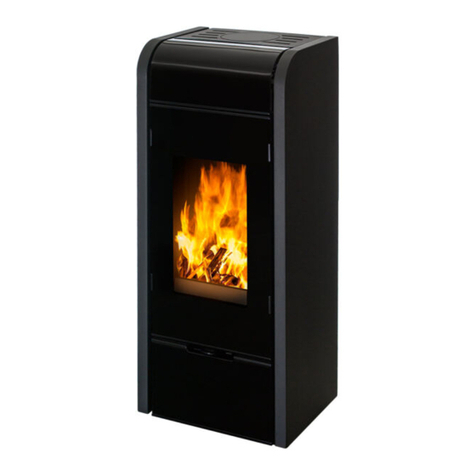
Burning Technology
Burning Technology LIBRA Instructions for installation, use and maintenance

Pur Line
Pur Line EFP54 quick start guide
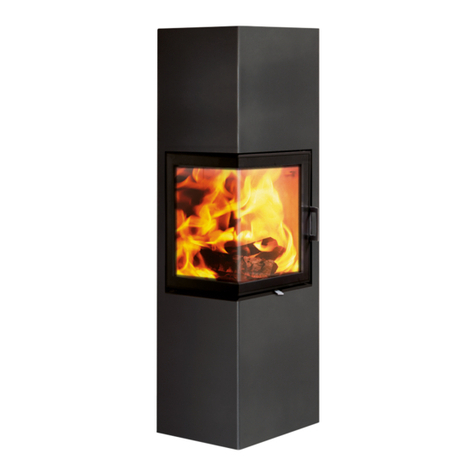
Austro Flamm
Austro Flamm Slim 2.0 operating manual

Pur Line
Pur Line biochimenea Heracles installation instructions

Comfort Bilt
Comfort Bilt HP55 Operator's manual
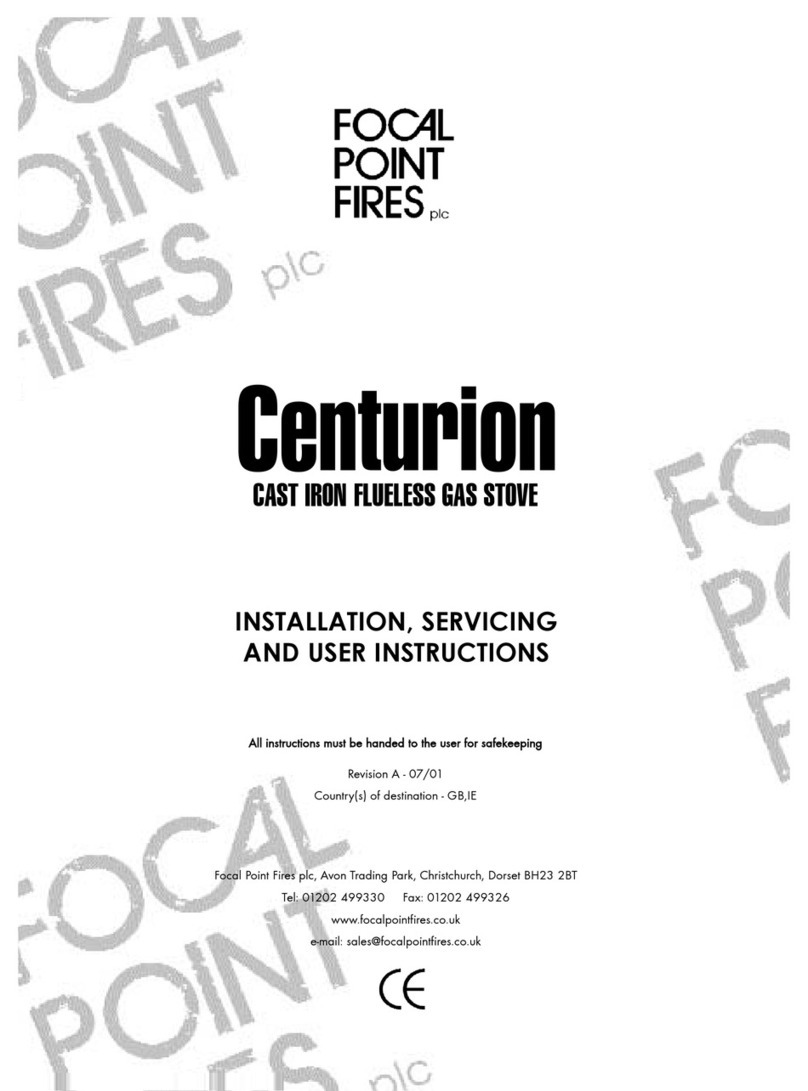
Focal Point
Focal Point Centurion Installation, servicing and user instructions
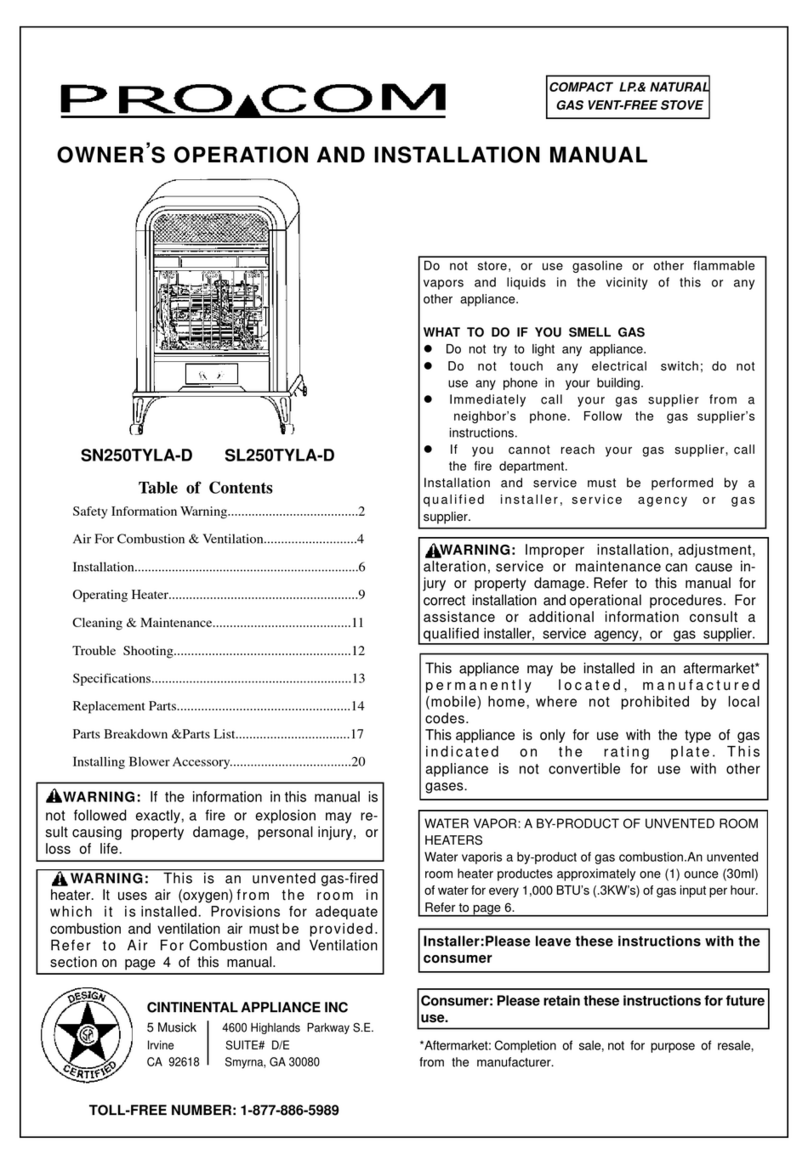
Procom
Procom SL250TYLA-D OWNER'S OPERATION AND INSTALLATION MANUAL

MrHeater
MrHeater Grand Teton PS60WTS Operating instructions and owner's manual
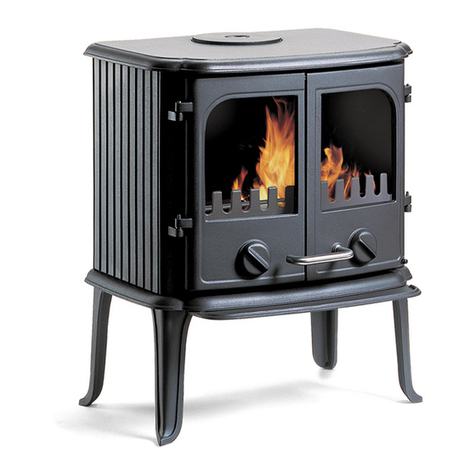
Morso
Morso 2110 Instructions for installation and use

Aarrow
Aarrow BK530 user guide

Regency
Regency Ultimate U39EX Owners & installation manual
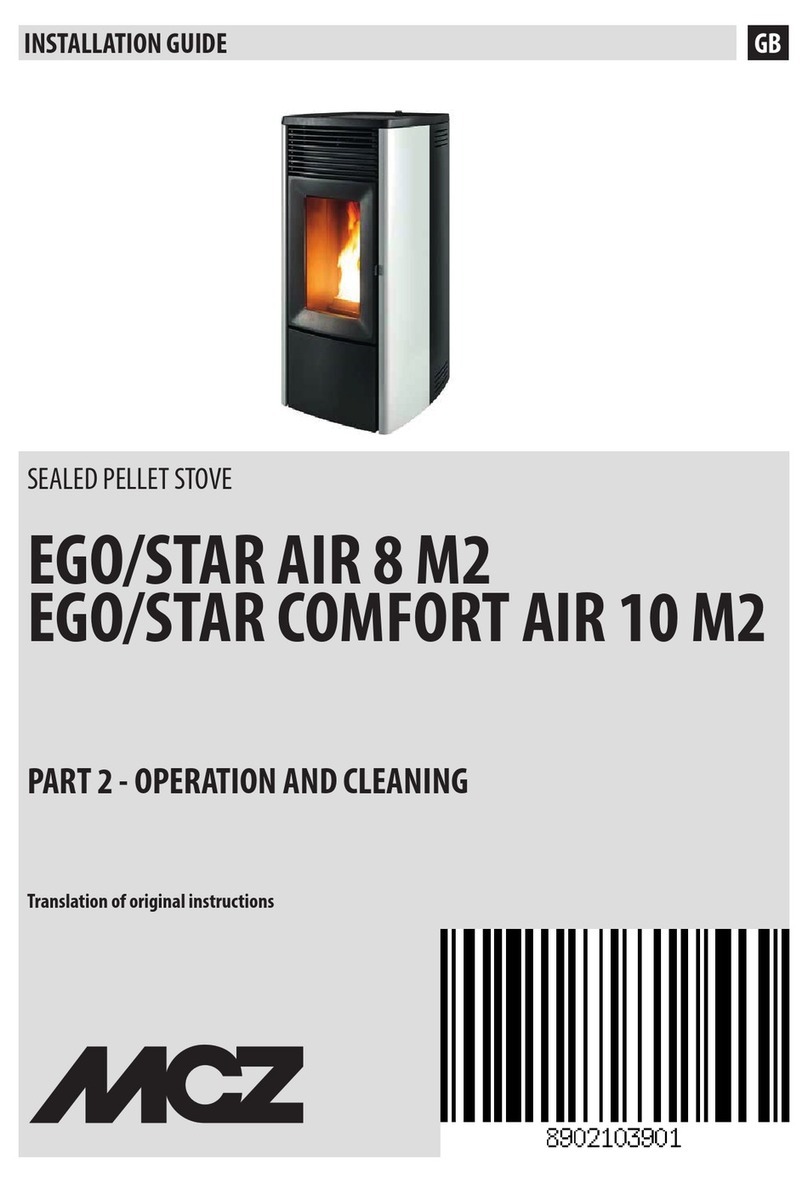
MCZ
MCZ STAR AIR 8 M2 installation guide



